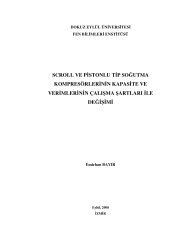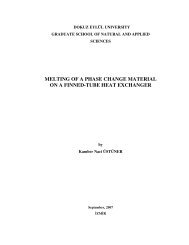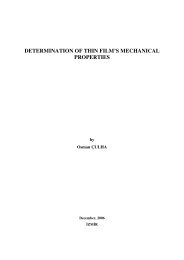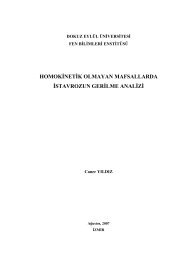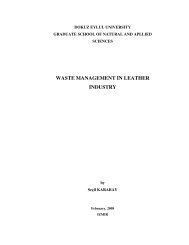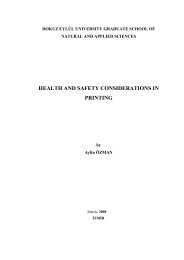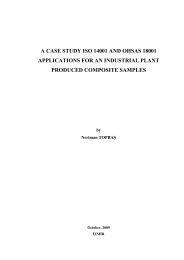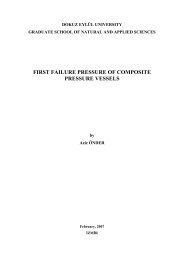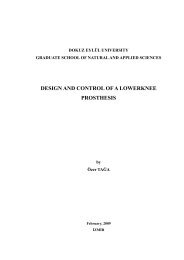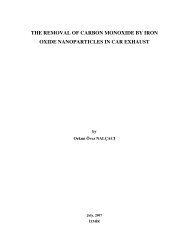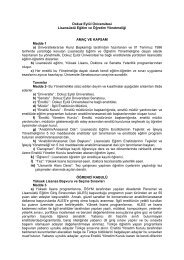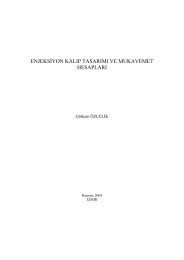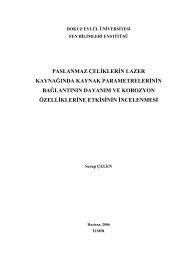A numerical study on the thermal expansion coefficients of fiber
A numerical study on the thermal expansion coefficients of fiber
A numerical study on the thermal expansion coefficients of fiber
Create successful ePaper yourself
Turn your PDF publications into a flip-book with our unique Google optimized e-Paper software.
6<br />
c<strong>on</strong>centrati<strong>on</strong> from pure metal to pure ceramic, using <strong>the</strong> aluminum–silic<strong>on</strong> carbide<br />
composite as a model system. Particular attenti<strong>on</strong> was devoted to <strong>the</strong> effects <strong>of</strong> phase<br />
c<strong>on</strong>nectivity, since o<strong>the</strong>r geometrical factors such as <strong>the</strong> phase shape and particle<br />
distributi<strong>on</strong> play a negligible role in affecting <strong>the</strong> overall coefficient <strong>of</strong> <strong>the</strong>rmal<br />
expansi<strong>on</strong> (CTE) <strong>of</strong> <strong>the</strong> composite.<br />
Islam et al. (2001) studied <strong>the</strong> linear <strong>the</strong>rmal expansi<strong>on</strong> <strong>coefficients</strong> <strong>of</strong><br />
unidirecti<strong>on</strong>al composites systematically by <strong>the</strong> finite element method. Thermal<br />
expansi<strong>on</strong> <strong>coefficients</strong> were first determined for composites with perfectly b<strong>on</strong>ded<br />
interface between <strong>fiber</strong> and matrix. Results are compared with available experimental<br />
and analytical results. Next cracks caused by deb<strong>on</strong>ding al<strong>on</strong>g <strong>the</strong> <strong>fiber</strong>-matrix<br />
interface were studied to investigate <strong>the</strong> effects <strong>of</strong> interface cracking <strong>on</strong> <strong>the</strong><br />
transverse <strong>the</strong>rmal expansi<strong>on</strong> <strong>coefficients</strong>.<br />
A combined experimental and <str<strong>on</strong>g>numerical</str<strong>on</strong>g> methodology for <strong>the</strong> evaluati<strong>on</strong> <strong>of</strong> <strong>fiber</strong><br />
properties from <strong>the</strong> composite macro-data was presented by Rupnowski et al. (2005).<br />
The methodology was based <strong>on</strong> <strong>the</strong> measurements <strong>of</strong> <strong>the</strong> elastic and <strong>the</strong>rmal macro<br />
properties <strong>of</strong> unidirecti<strong>on</strong>al and woven composites by <strong>the</strong> three-comp<strong>on</strong>ent oscillator<br />
res<strong>on</strong>ance method and dilatometry. It is <strong>the</strong>n followed by extracti<strong>on</strong> <strong>of</strong> <strong>the</strong> <strong>fiber</strong><br />
properties using <strong>the</strong> Eshelby/Mori-Tanaka model for unidirecti<strong>on</strong>al and finite<br />
element representative unit cells for woven systems.<br />
The aim <strong>of</strong> this <str<strong>on</strong>g>study</str<strong>on</strong>g> is to determine <strong>the</strong> <strong>the</strong>rmal expansi<strong>on</strong> <strong>coefficients</strong> <strong>of</strong><br />
composite materials using finite element method. A representative unit cell is used to<br />
model <strong>the</strong> micro-structure <strong>of</strong> composite materials and <strong>the</strong> obtained results are<br />
compared with available experimental data and analytical methods. It has been seen<br />
that finite element method is a good approach to find <strong>the</strong> <strong>the</strong>rmal expansi<strong>on</strong><br />
<strong>coefficients</strong> <strong>of</strong> composite materials.



